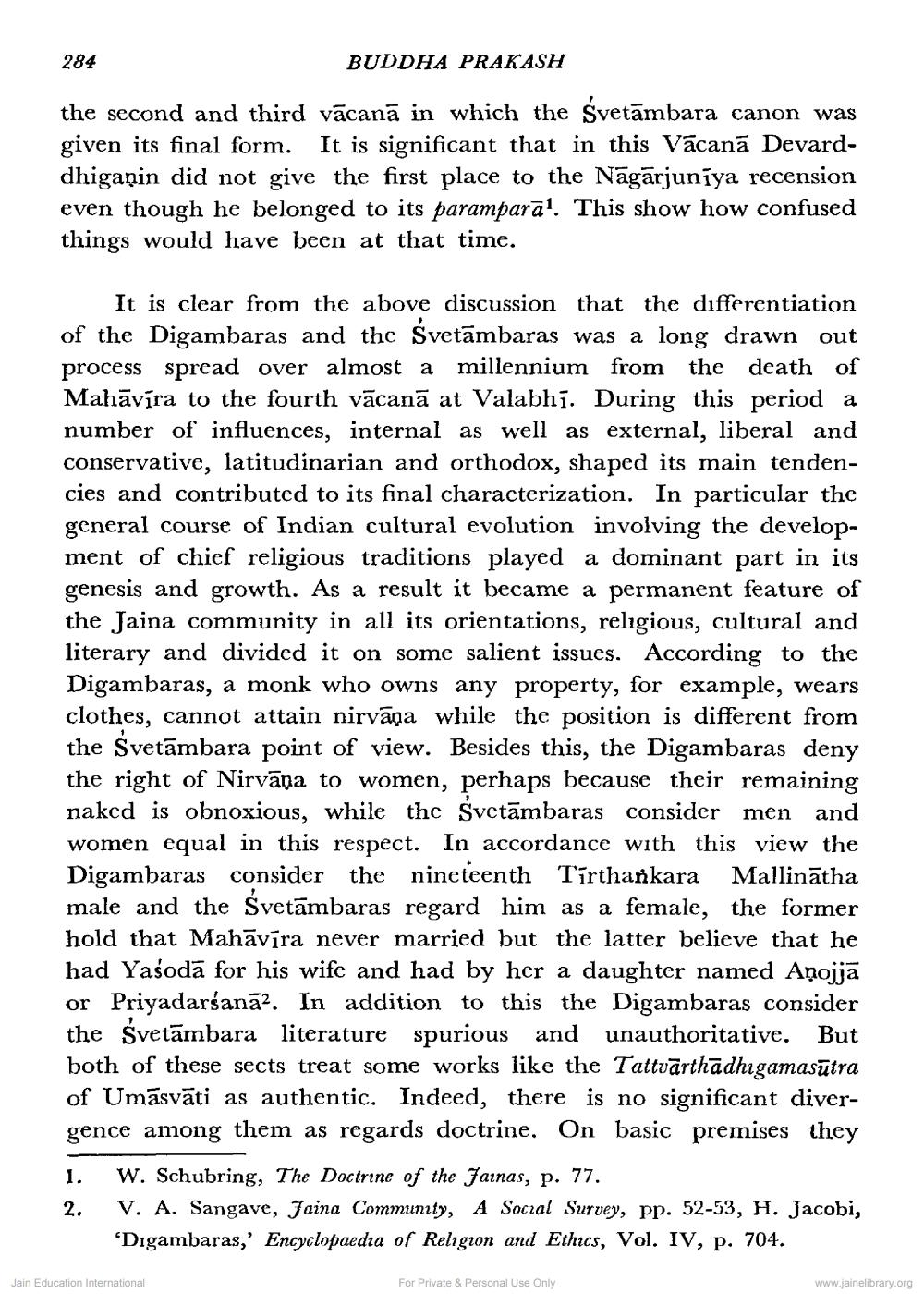________________
284
BUDDHA PRAKASH
the second and third vācanā in which the Svetāmbara canon was given its final form. It is significant that in this Vācanā Devarddhiganin did not give the first place to the Nāgārjunīya recension even though he belonged to its paramparā'. This show how confused things would have been at that time.
It is clear from the above discussion that the differentiation of the Digambaras and the Svetāmbaras was a long drawn out process spread over almost a millennium from the death of Mahāvīra to the fourth vācanā at Valabhī. During this period a number of influences, internal as well as external, liberal and conservative, latitudinarian and orthodox, shaped its main tendencies and contributed to its final characterization. In particular the general course of Indian cultural evolution involving the development of chief religious traditions played a dominant part in its genesis and growth. As a result it became a permanent feature of the Jaina community in all its orientations, religious, cultural and literary and divided it on some salient issues. According to the Digambaras, a monk who owns any property, for example, wears clothes, cannot attain nirvana while the position is different from the Svetāmbara point of view. Besides this, the Digambaras deny the right of Nirvāṇa to women, perhaps because their remaining naked is obnoxious, while the Svetāmbaras consider men and women equal in this respect. In accordance with this view the Digambaras consider the nineteenth Tirthařkara Mallinātha male and the Svetāmbaras regard him as a female, the former hold that Mahāvīra never married but the latter believe that he had Yaśodā for his wife and had by her a daughter named Aņojjā or Priyadarśana?. In addition to this the Digambaras consider the Svetāmbara literature spurious and unauthoritative. But both of these sects treat some works like the Tattvārthādhigamasūtra of Umāsvāti as authentic. Indeed, there is no significant divergence among them as regards doctrine. On basic premises they 1. W. Schubring, The Doctrine of the Fainas, p. 77. 2. V. A. Sangave, Jaina Community, A Social Survey, pp. 52-53, H. Jacobi,
'Digambaras,' Encyclopaedia of Religion and Ethics, Vol. IV, p. 704.
Jain Education International
For Private & Personal Use Only
www.jainelibrary.org




